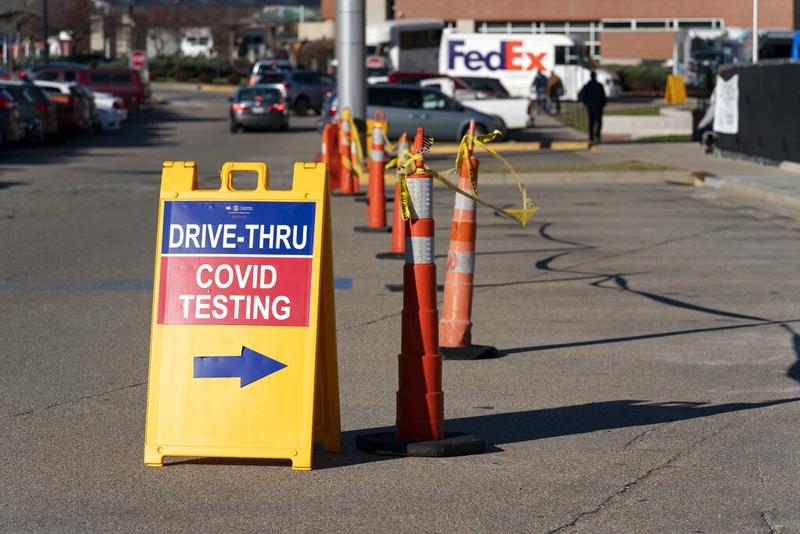 People wait to be vaccinated against COVID-19 at Discovery vaccination site in Sandton, Johannesburg, on Dec 15, 2021. (LUCA SOLA / AFP)
People wait to be vaccinated against COVID-19 at Discovery vaccination site in Sandton, Johannesburg, on Dec 15, 2021. (LUCA SOLA / AFP)
JOHANNESBURG/HAVANA - South Africa's national state of disaster, in place for more than two years in response to COVID-19, ended from midnight local time on Monday.
The national state of disaster has been the government's main mechanism for managing the pandemic. Removing it will do away with the vast majority of remaining COVID-19 restrictions, aside from a few that will remain in place on a transitional basis, President Cyril Ramaphosa said Monday.
"While the pandemic is not over, while the virus remains amongst us, these conditions no longer require we remain in a national state of disaster," he said in a televised address, referencing far lower rates of hospitalisation and deaths during the country's fourth wave of infections.
South Africa, the continent's most industrialised economy and the worst-hit in terms of reported infections and deaths, has been in an “adjusted level 1” lockdown, or the lowest of a five tier system since October.
Amid criticism for not ending the state of disaster and maintaining some painful measures that weighed on the country's struggling economy, Ramaphosa eased restrictions further in March.
The five-tier lockdown system, rules around isolation and access to old age homes, and the criminalization of non-adherence to such rules will be among the measures ended when the state of disaster expires.
The transitional measures that remain in place, such as a requirement to wear masks indoors, rules for travellers and a directive that enables the payment of a special relief grant, will lapse after 30 days, Ramaphosa said.
Cuba
Cuba will relax health measures for travelers entering the Caribbean country starting Wednesday, the Ministry of Public Health announced Monday.
Francisco Duran, the ministry's national director of hygiene and epidemiology, said the requirement to present a vaccination certificate on arrival, as well as a negative COVID-19 PCR test, will be eliminated.
Random sampling for COVID-19 will continue at ports and airports, and it will be mostly aimed at people coming from countries with a high incidence rate, while people who test positive will be hospitalized in accordance with the existing protocol.
Other health measures such as physical distancing, hand washing, surface cleaning and the use of masks, will be maintained.
"The relaxation of measures took into account the high immunization rate (against COVID-19) in the country, with three doses and a booster dose given to a large part of the population," Duran added.
Cuba has so far vaccinated more than 9.9 million of its 11.2 million residents with Cuban-made vaccines, while over 6.3 million have received a booster dose.
Figures released by the health ministry showed Cuba reported 619 new COVID-19 infections and one death in the last day, bringing the country's totals to 1,093,166 cases and 8,515 deaths.
 A sign points to a COVID testing site at the Cincinnati Veterans Affairs Medical Center in Cincinnati, on Jan 3, 2022.
(JEFF DEAN / AP)
A sign points to a COVID testing site at the Cincinnati Veterans Affairs Medical Center in Cincinnati, on Jan 3, 2022.
(JEFF DEAN / AP)
US
The US national public health agency said on Monday the BA.2 sub-variant of Omicron was estimated to account for nearly three of every four coronavirus variants in the country.
BA.2 now makes up about 86 percent of all sequenced cases globally, according to the World Health Organization
Overall COVID-19 cases in the United States have dropped sharply after hitting record levels in January, but a resurgence in cases in parts of Asia and Europe has raised concerns that another wave could follow in the United States. The country's health experts, however, believe it is unlikely.
The seven-day moving average of US COVID cases was 26,106 as of April 1, marginally lower than 26,309 from a week earlier, as per data from the US Centers for Disease Control and Prevention.
The highly transmissible BA.2 sub-variant makes up 72.2 percent of the COVID variants in the United States, as of April 2, up from nearly 57.3 percent in the preceding week, according to CDC estimates.
BA.2 now makes up about 86 percent of all sequenced cases globally, according to the World Health Organization. It is known to be more transmissible than the BA.1 and BA.1.1 Omicron sub-variants, however, the evidence so far suggests that it is no more likely to cause severe disease.


